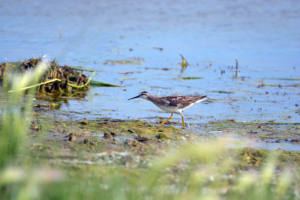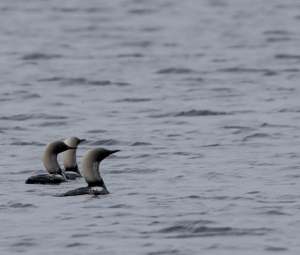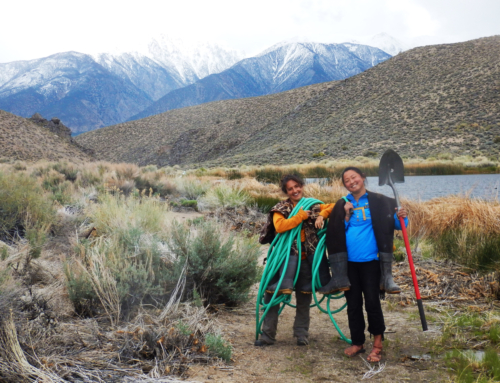
At lakes and rare wetlands throughout the Eastern Sierra, birders have the interesting opportunity to find shorebirds such as Wilson’s Phalarope, American Avocet and Black-Necked Stilts in the middle of the desert. Photo by Brady Owens, BLM.
As the days get warmer and longer, we are starting to see lots of migrating birds passing through California. Here in the Eastern Sierra, our diverse range of habitat makes birding a particularly exciting and rewarding activity. From the valley floor to the high mountains, visitors can enjoy dramatic scenery and an abundance of different bird species.
ESLT’s very own Black Lake Preserve is an excellent spot for birding. It is located in Adobe Valley, which is an Audubon-designated Important Bird Area. And Black Lake Preserve is home to an alkali lake and wet meadows that are critical to maintaining healthy bird habitat in Adobe Valley. Click here for a list of bird species, migratory and non-migratory, that can be found at Black Lake Preserve.

Red-necked phalarope. Photo by Bob Wick, BLM.
So make sure to save the date for our event with the Eastern Sierra Audubon Society on May 11th: World Migratory Bird Day at the Black Lake Preserve! We will be spending time birding alongside the Audubon Society’s experts who can teach you about the species we see and answer all of your questions. All birding levels are welcome, kids included.
Want to embark on a birding road trip this spring? Our partners at California Audubon put together a quick list of migratory birds that you can spot at Owens Lake or Mono Lake this season:
- At Owens Lake, you might spot White-faced Ibis, Black-necked Stilts, American Avocets, West and Least Sandpipers, California Gulls, or Wilson’s and Red-necked Phalaropes.
- At Mono Lake, you might spot Phaleropes, Ruddy Ducks, Cinnamon Teals, Green-winged Teals, Gadwalls, and American Widgeons.
Have fun playing Eastern Sierra bird bingo! If you want to learn more about birding in the Eastern Sierra, check out the plethora of information on the Eastern Sierra Audubon Society’s webpage. See you outside this spring!






